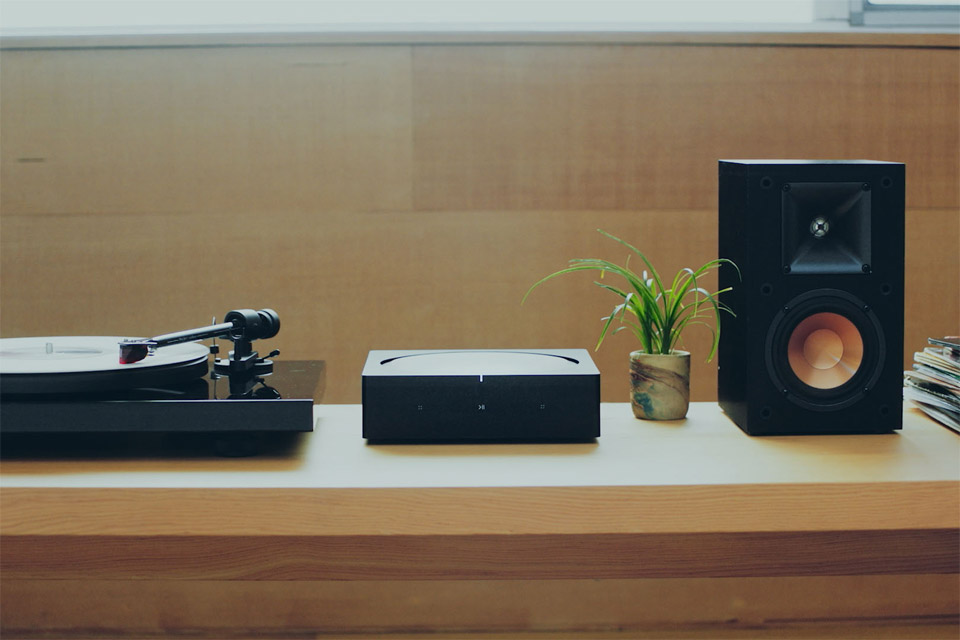

The IHF method tilts more toward peak power. There have been some modifications along the way and heated discussions disagreeing with some of the details, particularly the pre-conditioning requirement.

In 1974 the FTC established a spec to specify how amplifiers would be tested for the purpose of publishing it’s specs. This resulted in very cheap, inferior amplifiers touting very high power ratings compared to more expensive and competent amplifiers. In the 1970’s this was greatly abused and some manufacturers would shoot a very brief pulse through an amplifier and measure the power. Therefore the peak power handling of an amplifier is more important than the average power capability.
Sonos amp stores series#
The theory is that music is a series of peaks, with a fairly low average power level. You may want to find a non-partisan place to get a more balanced opinion.įor what it’s worth, when I look at Sonos’ sales page, under Features and Specs, the first item says: Class-D digital amplifier. But you’re asking this question on a Sonos forum, where opinions may be skewed. Sonos (and Bluesound, from what I am aware) are both part of integrated systems, so you may be better off in the long run fitting one or the other in your home, due to the fact that you already have invested in either one.īut on the surface, I’d suggest The Sonos Amp’s 125 watts, rms, is more than Bluesound’s 80W rms. There’s also advantages such as what kind of equipment you have in your home. So you would have the opportunity to test the Amp in your own home. The problem is that sometimes it isn’t as simple as “this one has X, the other has Y, so X is greater than Y, it must be better”.įortunately, if you purchase directly from Sonos, you get a limited time return policy. More often than not, they’re going to try to sell you the product that has the greatest profit margin for the store, or the one that gets them the greatest profit share from the sale.ĭo your own research, which you’re doing. ContentsSonos Amp, Sonos banana plugs (2), AC power cord, warranty and regulatory booklet, and Quickstart Guide.Never trust a sales person. System requirements: Passive speakers with speaker wire, broadband Internet, and Sonos app. Ethernet ports: Dual Ethernet ports can connect Amp to a wired home network and allow for connection of additional Sonos players. 802.11n only network configurations are not supported-you can either change the router settings to 802.11 b/g/n or connect a Sonos product to your router. Power + Networking Power supply: AC 100-120/220-240 V, 50-60 Hz WiFi: Connects to your home Wi-Fi network with any 802.11 b/g/n router. Product finish: Black Controls: Touch interface with volume up/down, previous/next track and play/pause. Physical Dimensions - H x W x D: 2.52 x 8.54 x 8.54 in. Adjust volume by individual room or by groups of rooms. Adjustable bass and treble controls to optimise sound performance. Subwoofer output: Auto-detecting RCA type, user-adjustable 50-110 Hz crossover Speaker output connections: Banana plugs (2) capable of stereo or dual mono sound.

Sonos amp stores tv#
TV device with HDMI ARC or optical output (optical adaptor required). Audio Class-D digital amplifier: 125 W/Ch at 8 ohms Line-In Sources Supported: Audio device with analogue RCA output or optical output (optical adaptor required).


 0 kommentar(er)
0 kommentar(er)
